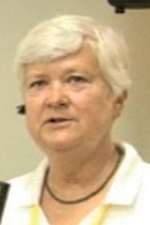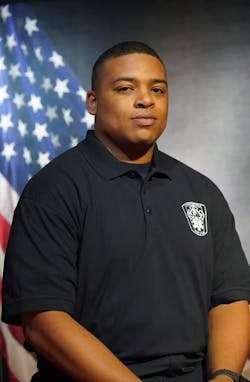NIOSH Issues Tips to Prevent Heat Stroke after VA Firefighter Recruit's Death
Following a probe into the 2021 death of a Virginia firefighter recruit, NIOSH has suggestions on how to prevent heat-related issues.
Chesterfield County Fire and EMS Recruit Tyvaughn Eldridge, 25, died of heat stroke after collapsing during a mandatory run on his first day of the training academy.
While he originally appeared coherent, telling his instructor he wanted to continue, his condition deteroriated rapidly. He repeatedly fell when he tried to get up. An instructor and a department videographer couldn't get him into a van. So, they placed him back on the ground, according to the NIOSH report.
While being packaged for transport, he became unresponsive. Medics were unable to intubate him. A monitor showed he was tachycardic.
His core temperature was 105.6 when he arrived at the hospital.
Multiple vasopressors were started for blood pressure support and cooling measures were initiated with placement of Arctic Sun™ cooling pads, cold saline infusion, and gastric lavage with cold saline. He was transferred to the intensive care unit after a diagnoses of
shock due to exertional heat stroke and respiratory failure, according to the report.
Eldridge died two days later surrounded by his family and fellow firefighters.
"Exertional heat stroke in the fire service is a known issue due to the risk factors for it that are inherent to the job i.e., engaging in strenuous physical activities in proximity to a live heat source, engaging in fire suppression activities while wearing 40–60 pounds (lbs) of equipment including heat trapping turnout gear, and depending on geographic location and time of year, engaging in these activities in a hot ambient environment. NIOSH has conducted prior investigations on heat stroke deaths in firefighters during actual fire responses as well as during training events," authors wrote.
They added that although prevention of exertional heat stroke may not be possible, there are ways to reduce its risk including but not limited to:
• Allow an acclimatization period of at least 14 days when moving to/starting outdoor work in a new climate.
• Gradually increase level of exertion through progressive physical fitness training regimens.
This will also help reduce the risk of developing rhabdomyolysis, muscle breakdown.
• When possible, avoid concurrent use of substances that can impair the body’s heat loss
mechanisms such as vasoconstrictors like caffeine, decongestants, etc.
Among the recomendations, investigators listed:
• Fire departments should ensure all firefighter candidates receive a pre-employment medical examination consistent with National Fire protection Association (NFPA) 1582, Standard on Comprehensive Occupational Medical Program for Fire Departments. Although the FD was compliant with this recommendation and no exclusionary conditions were found in this case, it is being provided here as a reminder of good practice.
• Fire departments should consider refining cadet/recruit communications to clearly state what components are mandatory at the start of their training versus those used as an initial benchmark to measure physical fitness progress over the course of the training program.
• Fire departments should consider providing guidance to incoming cadets/recruits on how to improve their physical fitness capacity prior to the start of their formal firefighter training in a safer, gradual manner to reduce their risks for exertional heat
related illness and/or rhabdomyolysis.
• Fire departments should consider providing information on heat stroke and other heat related illnesses (HRIs) as part of the materials sent with conditional acceptance letters especially if training start dates will occur in warm or hot weather. Annual refresher training on HRI for training center staff should be provided in early spring
immediately prior to hot weather months.

Susan Nicol | News Editor
Susan Nicol is the news editor for Firehouse.com. She is a life member and active with the Brunswick Volunteer Ambulance & Rescue Company, Oxford Fire Company and Brunswick Vol. Fire Co. Susie has been an EMT in Maryland since 1976. Susie is vice-president of the Frederick County Fire/Rescue Museum. She is on the executive committee of Frederick County Volunteer Fire and Rescue Association. She also is part of the Maryland Institute for Emergency Medical Services Systems (MIEMSS) Region II EMS Council. Susie is a board member of the American Trauma Society, Maryland Division. Prior to joining the Firehouse team, she was a staff writer for The Frederick News-Post, covering fire, law enforcement, court and legislative issues.






